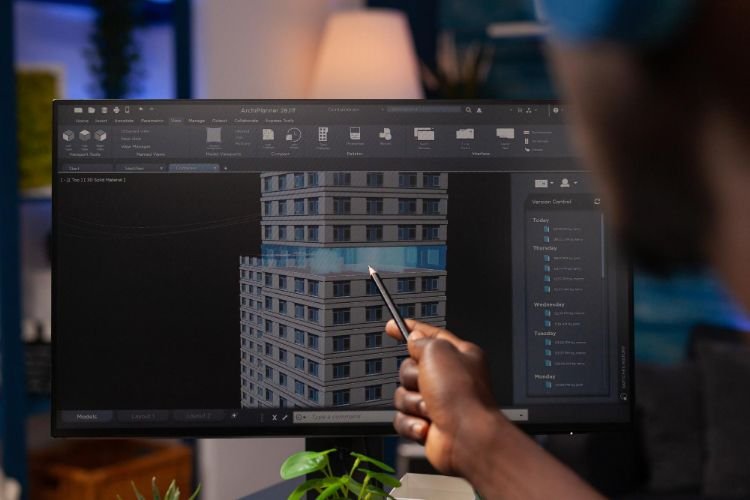BIM holds significant importance for Architects
Importance of BIM in Architects

BIM, or Building Information Modeling, is a digital process that involves creating a collaborative and comprehensive representation of a building or infrastructure. BIM is particularly valuable for architects as it goes beyond traditional 3D modeling, incorporating additional dimensions of information such as time (4D), cost (5D), and facility management data (6D).
BIM for architects revolutionizes the design and construction process by providing a collaborative, data-rich environment that supports informed decision-making, enhances coordination, and extends the value of the architectural model throughout the entire lifecycle of a building.
Building Information Modeling (BIM) holds significant importance for architects, transforming the way they design, collaborate, and manage projects. Here are key reasons why BIM is crucial for architects:
Collaborative Design:
BIM provides a centralized platform for real-time collaboration, improving communication and coordination throughout the project.
Comprehensive Design Information:
BIM incorporates various dimensions of information (3D, 4D, 5D, and 6D) into the model. Architects can include details about materials, costs, schedules, and even facility management data, creating a comprehensive and intelligent digital representation of the building.
Visualization and Simulation:
BIM enables architects to create realistic 3D visualizations of their designs. These visualizations aid in communicating design intent to clients and stakeholders. Additionally, architects can simulate aspects like construction sequences, lighting, and energy performance to make informed decisions.
Iterative Design Process:
BIM supports the iterative design process, allowing architects to experiment with design alternatives efficiently. Changes made in one part of the model are automatically reflected throughout the entire project, streamlining the design development.
Enhanced Coordination:
BIM improves coordination between different design disciplines. Clash detection features help identify and resolve conflicts early in the design phase, reducing the likelihood of errors during construction.
Cost Estimation and Budget Control:
BIM includes cost estimation features (5D) that help architects assess the cost implications of design decisions. This allows for better budget control and alignment of design choices with project financial constraints.
Time Management:
BIM includes scheduling features (4D) that provide architects with insights into project timelines. Architects can visualize the construction sequence and optimize design decisions to meet project deadlines.
Efficient Construction Documentation:
BIM streamlines the creation of construction documentation. Drawings, specifications, and other documentation are directly linked to the digital model, ensuring consistency and reducing errors in the documentation process.
Facility Management and Lifecycle Considerations:
BIM extends beyond the construction phase, incorporating data for facility management (6D). Architects can provide valuable information for ongoing maintenance, renovations, and decision-making throughout the building's lifecycle.
Regulatory Compliance:
BIM helps architects ensure that designs comply with building codes and regulations. The ability to visualize and analyze the impact of design decisions contributes to achieving regulatory compliance more efficiently.
Sustainability and Energy Analysis:
BIM tools often include features for sustainability analysis. Architects can assess the environmental impact of design choices, allowing for the creation of more sustainable and energy-efficient buildings.
The importance of BIM in architecture lies in its ability to enhance collaboration, streamline design processes, improve decision-making, and provide a comprehensive and intelligent digital representation of buildings throughout their entire lifecycle. Adopting BIM practices has become a standard in the architecture industry, contributing to more efficient and effective project delivery.
Gain a master's degree in building and infrastructure management, as well as ongoing training from CAAD Centre Thrissur that teaches you how to use BIM software to efficiently generate and manage BIM models of buildings and infrastructure projects. An excellent training for professionals in engineering, architecture, and construction
Latest Blogs

How to choose a good CAAD Centre?

Importance of Revit for Architects

Importance of CAD in Designing

Importance of BIM in Architects

The top Civil CADD training center in Thrissur

Creating Realistic Interiors with AutoCAD.

MEP engineering's scope By 2025

The Importance of Thrissur Civil CAAD Training Certification: Capture the Chances!


